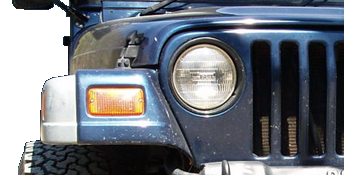TI was advised that using a non OEM (4 core) type will leaded to almost instantaneous self destruction of my engine do to some exponential thermal inductances thing that happens at 35mph..
It was advised that you need to make sure what you get is infact a 4 core rad and not a 3 core with larger tubes, OEM is prefferable due to the fact that is what was designed for the vehilce as oppsed to a cheap attempt at making something that might work as most after market parts places are more apt to carry.
Check with Kevin Michael. You know he knows his later-model GM trucks.

My experiances have been relayed and acknowledged,
I fought a simliar issue in a similar truck a few years ago, and it was due to the radiator (new after market) that had the same surface area ( dimensionally correct) but was a 3 row brass and copper rad, as opposed to a 4 row factory ALUMINUM.
I ruled out the radiator as the culprit because it was "new" and was dimensionally correct. ( stupid me)
Consider the fact the a BB chevy eninge installed in those truck RUNS AS NORMAL TEMP 210°, add to it that there is the extra heat of the AC condensor infront of it, a trans cooler and engine cooler IN the end tanks of said radiator, and now you have a 103° day AND TOWING. THe engine bay is tight, not much air flow in there, as you would have with a small block.
Take away the air damn under the front bumper, and the duct work behind grill between the bumper and core support and you have a very poor funnel to direct air. any one of these peices missing or damaged can cause a cooling issue.
Yeah, it may have looked good new from the factory, but it was more functional than it was form.
And it was suggested using a diesel radiator, while may be of some help, the diesels also had some issues keeping cool in hot temps as well, not bad, but they ran the ragged edge. Much like a Big Block does when working properly.





<----- added for gratification of 4yr old






 <----- added for gratification of 4yr old
<----- added for gratification of 4yr old